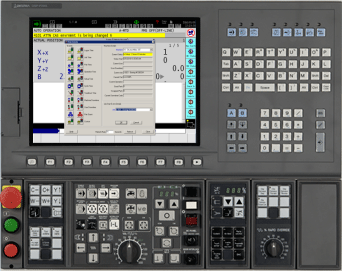6 Ways to Demystify CNC Programming
Posted by
Mike Williams on Tue, Apr 16, 2013
 Whether you’re brand new to CNC machine programming or working with a new machine tool control system, it’s easy to feel overwhelmed and even a bit intimidated. Gosiger applications engineer and CNC programming instructor Kevin Chandler has taught scores of machine operators over the past 20 years, so we asked him to share a few basic programming thoughts.
Whether you’re brand new to CNC machine programming or working with a new machine tool control system, it’s easy to feel overwhelmed and even a bit intimidated. Gosiger applications engineer and CNC programming instructor Kevin Chandler has taught scores of machine operators over the past 20 years, so we asked him to share a few basic programming thoughts.
- Simplicity — First, realize that CNC programming looks more complicated than it really is. It’s simply a logical process that uses numbers and letters to represent what you want the machine tool to do. If you read the program one line at a time, you will see that it’s a step-by-step process. And like anything that seems complex, if you break it down into its component parts, it’s much easier to understand.
- Templates — When you’re new to programming or when programming a control that is new to you, I suggest looking at an existing, proven program for that machine. This will act as a template for your first programs. Using this programming template as a guide helps you make sure you don’t skip a step or overlook an important part of the process.
- Consistency — In the same way, establish a programming format that allows you to follow the same procedure every time you program. For example, you might always list axes in alphabetical order and G and M codes in numerically ascending order.
- Repetition — One mistake some people make is to try and memorize all of the G and M codes. It’s enough to know that G codes tell the machine how to move and M codes turn spindles, coolant and other items on and off. You can always look up what a specific G or M code does. After a while you’ll learn, rather than memorize, the codes through using them on a regular basis.
- Meaning — Don’t be intimidated by the alphabet soup of letters used in CNC programming. Everyone is familiar with the X-, Y- and Z-axes. The other common programming letters relate to these three axes and indicate some sort of action, such as rotation, and follow an alphabetical pattern that looks like this:
X I U A
Y J V B
Z K W C
In most program formats, the letters in each horizontal row are related. “A”, for example, generally relates to the X-axis, while “C” relates to the Z-axis. - Time — Don’t get discouraged. Like many activities, learning CNC machine programming takes time. The more programming you do, the better you get at it. In addition, CNC machine control technology continues to expand the machine tools’ capabilities. I’ve been doing this for more than 20 years, and I still learn something new every day. I also have the opportunity to work with an experienced staff of other applications engineers here at Gosiger. We collaborate daily to help customers improve their CNC programming so they can make their parts better and more efficiently.
Gosiger offers its customers hands-on classes in CNC programming along with ongoing support that’s as near as your telephone. To learn more, contact us.